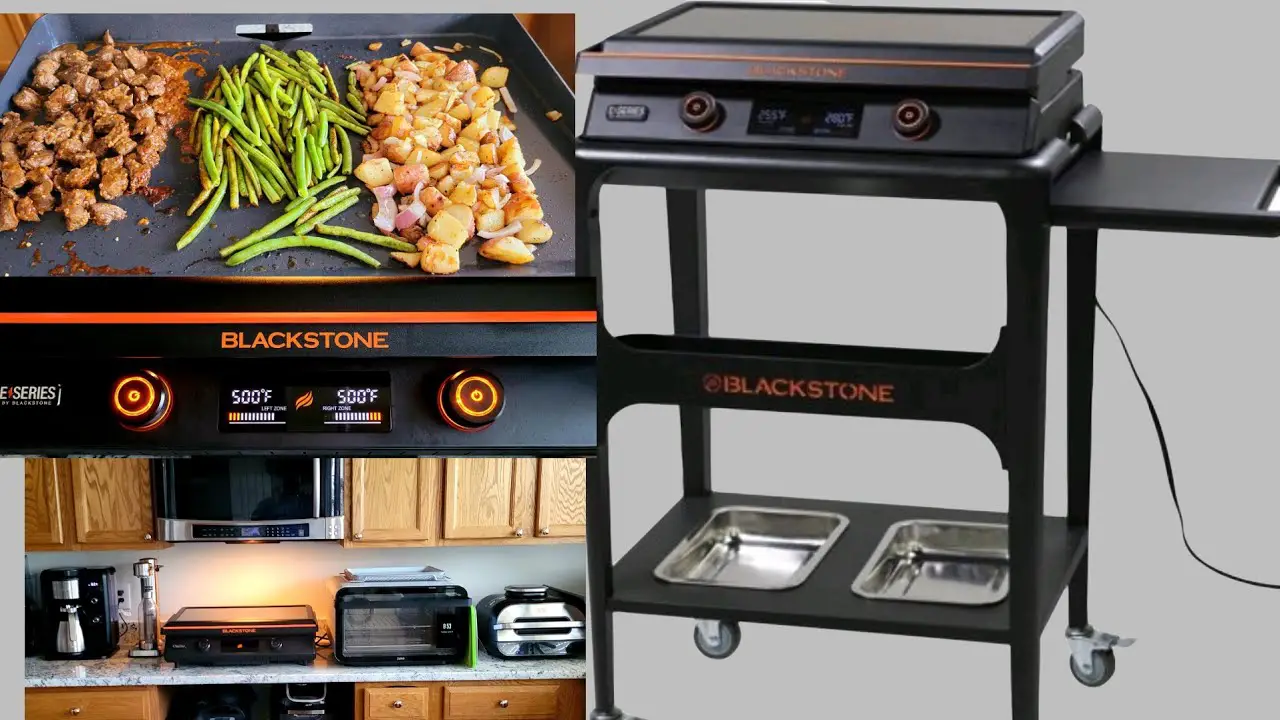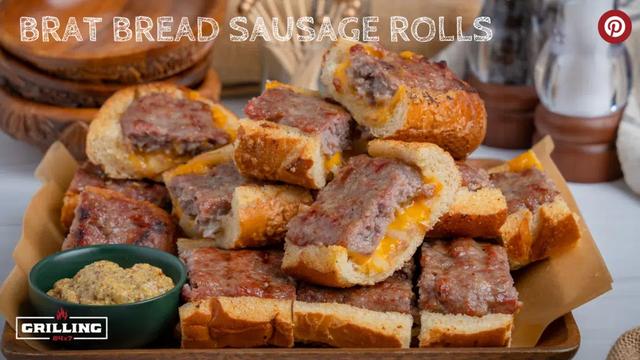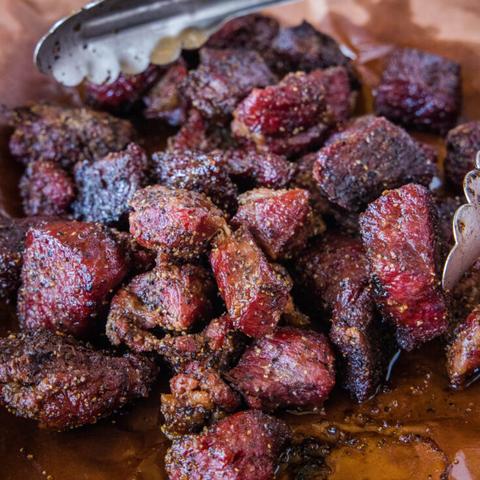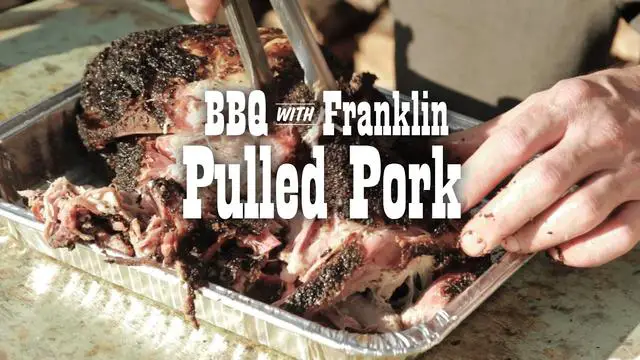
“Aaron Franklin Pork Butt: Master the Art of Smoking with the Legendary Pitmaster”
Who is Aaron Franklin?
Aaron Franklin is an Austin, Texas-based BBQ master who gained fame for his exceptional barbecue skills. He developed a passion for BBQ at a young age, thanks to his parents’ small BBQ joint in Texas. Starting with a cheap offset smoker, he honed his cooking abilities and eventually became internationally known for his BBQ.

When smoking a pork butt, it is recommended to choose a bone-in pork butt or Boston butt. This cut of meat is located at the top of the shoulder and contains more marbling and fat, resulting in tender and juicy pulled pork. While you can also smoke pork shoulder or picnic roast, they are leaner cuts with less marbling, so they won’t produce the same quality of pulled pork as a bone-in pork butt.
Aaron Franklin prefers to keep things simple when it comes to rubs. He typically uses a combination of kosher salt, coarse black pepper, and paprika in equal parts. He believes in letting the natural flavors of the meat shine through and focuses on enhancing them rather than using complex rubs with numerous ingredients. This minimalist approach allows the true flavors of the meat to come through during smoking.
Aaron Franklin smokes his pork butt at higher temperatures than traditional methods. While most smokers aim for temperatures around 225-255F, Aaron prefers temperatures between 265-280F. This may be due to efficiency reasons when cooking large volumes of meat. Additionally, he smokes the pork butt fat side up and recommends spritzing it with a 50/50 mixture of apple cider vinegar and water during the cooking process.
In his method, Aaron Franklin wraps the pork butt in foil after it reaches a certain point. This helps to speed up the cooking process and allows more of the fat to render down while trapping moisture inside the wrap. While some prefer to use butcher paper for wrapping, aluminum foil works just fine. After removing from the smoker, it is recommended to rest the wrapped pork butt for about an hour before shredding or serving.
For serving, pulled pork sandwiches on brioche-style buns are a popular choice. Adding homemade BBQ sauce and jalapenos can enhance the flavor even further. As for sides, smoked mac and cheese is a classic option that pairs well with pulled pork. If you have leftovers, there are many ways to repurpose them, such as using them in tacos, nachos, or even freezing them for future meals.
Pork Butt or Pork Shoulder for Pulled Pork

Pork Butt or Pork Shoulder for Pulled Pork
When it comes to making pulled pork, you might be wondering whether to use a pork butt or a pork shoulder. While both cuts come from the shoulder area of the hog, they do differ in terms of location. The pork butt is located at the top of the shoulder, while the pork shoulder is located below.
For the best results in making smoked pulled pork, I recommend using a bone-in pork butt, also known as a Boston butt. This cut has a higher fat content and more marbling, which helps to render out and result in tender, juicy pulled pork. Aaron Franklin also prefers using a bone-in pork butt in his recipe.
Although you can still smoke a pork shoulder or picnic roast, they have less marbling and tend to be leaner and tougher than a Boston butt. This can result in less flavorful and less tender pulled pork.
In conclusion, if you want to achieve the same quality of smoked pulled pork as Aaron Franklin’s recipe, I suggest using a bone-in pork butt. The fat content and marbling will help create juicy and flavorful pulled pork that will elevate your barbecue game.
Can You Make Smoked Pork Shoulder?
Yes, you can make smoked pork shoulder. While this recipe is specifically for a pork butt, also known as a Boston butt, you can also smoke a pork shoulder, which is often referred to as a picnic roast. However, it’s important to note that the quality of the smoked pulled pork may not be the same as when using a Boston butt. The pork shoulder is leaner and tougher, resulting in less marbling and potentially less tender pulled pork.
To prepare the bone-in pork butt, start by lightly trimming it. There’s no need to remove too much fat as pork butts are forgiving and contain plenty of fat for flavor and moisture. If there are any large chunks of fat hanging off the meat, you can remove them. Thaw or chill the pork butt before beginning the smoking process.
The rub for this recipe consists of kosher salt, coarse black pepper, and paprika in a 50/50 ratio. Combine these ingredients together to create your rub mixture.
Please note: The information provided here is based on the original article and may not include all details mentioned in the article.
Key Takeaways From Aaron Franklins Method
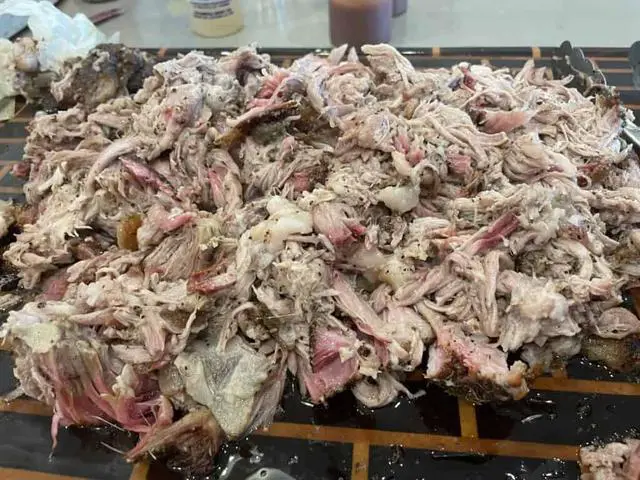
Key Takeaways From Aaron Franklins Method:
1. Use a bone-in pork butt for the best results, as it has more marbling and fat that renders out during smoking, resulting in tender pulled pork.
2. Keep the rub simple, using a combination of kosher salt, coarse black pepper, and paprika. Aaron believes in letting the natural flavors of the meat shine through.
3. Smoke at higher temperatures than usual, around 265-280F, to achieve efficiency in cooking. This may be due to Aaron’s large-scale cooking operations.
4. Smoke the pork butt fat side up and spritz it with a 50/50 mixture of apple cider vinegar and water to help keep it moist during the cooking process.
5. Wrap the pork butt in foil once the fat cap splits, usually after around 8 hours of smoking. This helps speed up the cook and traps moisture inside.
6. Rest the wrapped pork butt in foil for at least an hour before shredding or serving to allow the juices to redistribute throughout the meat.
These key takeaways from Aaron Franklin’s method can help elevate your smoked pork butt game and produce delicious results.
Simple Ingredients
This Aaron Franklin inspired smoked pork butt recipe requires just a few simple ingredients. All you need is a bone-in pork butt, kosher salt, coarse black pepper, and paprika for color. That’s it! Aaron believes in letting the natural flavors come through and keeping things simple, so there’s no need for complex rubs or additional spices.
Start by lightly trimming the pork butt, removing any large chunks of fat that are hanging. Then, combine the kosher salt, coarse black pepper, and paprika to create your rub mixture. Coat the pork butt generously with the rub on all sides.
Next, prepare your smoker or grill to smoke at a temperature of 265-280F. Place the pork butt on the smoker fat side up and let it smoke for about 8 hours. During this time, you can spritz the pork butt with a 50/50 ratio of apple cider vinegar and water every hour or so.
After 8 hours, check if the fat cap of the pork butt has split. If it has, it’s time to wrap the pork butt in foil. Increase the temperature to 280-300F and continue smoking for another 2 hours wrapped in foil.
The total cooking time for this recipe is around 10 hours. However, always rely on temperature rather than time when determining doneness. The internal temperature should reach around 203-205F for tender pulled pork.
To check if it’s done, use an instant-read probe thermometer to poke into the meat. It should go through with practically no resistance and read around 203F give or take a couple of degrees.
Once the pork butt is done, let it rest in the foil for about 1-1.5 hours before shredding. Serve the pulled pork on brioche-style buns with homemade BBQ sauce and optional toppings like jalapenos.
If you have any leftovers, there are plenty of options. You can try out different leftover pulled pork recipes, vacuum seal it for later use, or simply reheat it when needed.
Remember to experiment and find your favorite style of pulled pork sandwich toppings. And don’t forget that smoked mac and cheese makes a delicious side dish to accompany your pulled pork.
Temperatures
Aaron Franklin smokes his pork butt at higher temperatures than the traditional 225-255F range. He typically smokes at around 265-280F for efficiency, especially when cooking in large volumes. However, you can still achieve great results with this method.
During the first 8 hours of smoking, keep the temperature at 265F. This will allow the pork butt to cook thoroughly and develop a nice bark on the outside. After 8 hours, increase the temperature to 280-300F and wrap the pork butt in foil. This will help speed up the cooking process and trap moisture inside the wrap.
Smoke Fat Side Up
According to Aaron Franklin’s method, it is recommended to smoke the pork butt with the fat side facing up. This allows the fat to render down into the meat, resulting in a moist and flavorful pulled pork.
Aaron Franklin likes to spritz his pork butt during the smoking process. This involves spraying a mixture of apple cider vinegar and water onto the meat every hour or so. This helps to keep the meat moist and adds some additional flavor.
In Aaron’s method, he wraps the pork butt in foil after it reaches a certain point in the cooking process. This helps to speed up the cooking time and also traps moisture inside the wrap, resulting in tender and juicy pulled pork.
After removing the pork butt from the smoker, it is recommended to let it rest in foil for about an hour. This allows the juices to redistribute throughout the meat, making it even more flavorful and tender.
Aaron Franklin suggests using oak wood for smoking pork butt. Specifically, post oak if it is available. Oak provides a nice smoky flavor that complements the pork well. You could also try experimenting with fruit woods like pecan for some added flavor.
For a 10-pound pork butt, Aaron recommends smoking at around 265-280°F for about 8 hours, then wrapping in foil and increasing the temperature to 280-300°F for an additional 2 hours. However, always rely on internal temperature rather than time when determining doneness.
When it comes to serving the pulled pork, Aaron keeps it simple. He suggests using brioche-style buns, homemade BBQ sauce, and adding some jalapenos for a little kick. Pair it with some smoked mac and cheese for a delicious barbecue feast.
Note: This is just a summary of the key points from the article. For more detailed instructions and information, please refer to the original source.
Spritzing
One of Aaron Franklin’s techniques that he uses when smoking a pork butt is spritzing. Spritzing involves using a spray bottle to mist the pork butt with a mixture of apple cider vinegar and water. This helps to keep the meat moist during the cooking process and also adds some flavor. Aaron recommends using a 50/50 ratio of apple cider vinegar and water in your spray bottle for the best results.
Another technique that Aaron Franklin uses is wrapping the pork butt in foil during the cooking process. This helps to speed up the cooking time and also helps to trap in moisture, resulting in a tender and juicy finished product. Aaron typically wraps his pork butt once the fat cap has split, which usually occurs around the 8-hour mark. You can use aluminum foil or butcher paper to wrap your pork butt, both options will work well.
After your pork butt has finished cooking, it’s important to let it rest before serving. Aaron Franklin recommends resting the pork butt in the foil that you wrapped it in for about one hour. This allows the juices to redistribute throughout the meat, resulting in a more flavorful end result. You can rest your pork butt for longer if you prefer, but make sure to keep it wrapped tightly in foil to retain heat.
Overall, following these techniques from Aaron Franklin can help you achieve delicious smoked pulled pork with great flavor and texture. Enjoy!
Visual Indicators
When smoking a pork butt, there are a few visual indicators to look out for to know when it is ready to be wrapped. One of the key indicators is when the fat cap begins to split. This usually occurs after around 8 hours of cooking. Once you see the fat cap splitting, it’s a good sign that the pork butt is nearing doneness and should be wrapped in foil.
Another visual indicator is the internal temperature of the pork butt. Aim for an internal temperature of 203-205F. To check the temperature, use an instant-read probe thermometer and insert it into the meat. When the meat reaches this temperature range, it should be tender enough to shred easily.
Lastly, pay attention to the color and texture of the bark on the outside of the pork butt. A dark, mahogany-colored bark with a slightly crispy texture indicates that it has been properly smoked and is ready to be wrapped.
Wrapping
Aaron Franklin wraps his pork butt in foil once the fat cap splits. This usually happens around the 8-hour mark, but it can vary. If your pork butt hasn’t split after 8 hours, increase the temperature and wrap it in foil to speed up the cooking process. Wrapping the pork butt helps to render more fat and trap moisture inside, resulting in a tender and juicy end product. You can use aluminum foil or butcher paper for wrapping.
After removing the wrapped pork butt from the smoker, let it rest in the foil for about an hour. Aaron Franklin recommends resting for one hour, but you can go up to 1.5 hours if desired. Resting allows the juices to redistribute throughout the meat, making it even more tender and flavorful. It’s always a good idea to rest large cuts of meat before slicing or shredding.
Resting
After the pork butt is cooked to the desired internal temperature, it is important to let it rest before serving. This allows the juices to redistribute throughout the meat, resulting in a more tender and flavorful final product. Aaron Franklin recommends resting the pork butt in the foil that it was wrapped in for about one hour. However, you can also extend this resting time to 1.5 hours if desired.
During this resting period, it is important to keep the pork butt insulated to retain heat. You can wrap it in towels or place it in a cooler to help maintain its temperature. Once the resting time is over, you can unwrap the pork butt and begin shredding it for serving.
Resting is an essential step in achieving perfectly tender pulled pork. It allows for optimal flavor development and ensures that each bite is moist and juicy. So be patient and resist the temptation to rush this step – your taste buds will thank you!
Smoking Pork Butt Overview
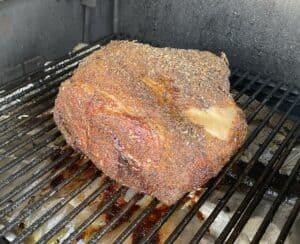
Smoking a pork butt is an easy and forgiving process due to its large size and high fat content. The key to success is ensuring thorough cooking and proper rendering of the fat. Using a bone-in pork butt, also known as a Boston butt, will yield the best results. It is recommended to use a simple rub consisting of kosher salt, coarse black pepper, and paprika to enhance the natural flavors of the meat.
Aaron Franklin, a renowned BBQ master, smokes his pork butt at higher temperatures than traditional methods. While most smokers operate in the range of 225-255F, Franklin prefers temperatures around 265-280F for efficiency purposes. He also suggests smoking the pork butt with the fat side up and periodically spritzing it with a mixture of apple cider vinegar and water.
One unique aspect of Franklin’s method is wrapping the pork butt in foil after it splits its fat cap. This helps speed up the cooking process and enhances moisture retention. Resting the wrapped pork butt for one to two hours before serving allows for optimal tenderness. Overall, following these steps will result in tender, flavorful pulled pork that can be enjoyed on its own or in various dishes such as sandwiches or smoked mac and cheese.
What’s The Best Wood For Smoking Pork Butt?
When it comes to smoking pork butt, the best wood to use is oak. Specifically, post oak if you can get it. Oak wood provides a mild and slightly sweet flavor that complements the rich and fatty nature of pork butt. It burns consistently and evenly, allowing for a steady smoke throughout the cooking process. If you want to experiment with different flavors, you can also try using fruit woods like pecan for a subtle fruity aroma.
Plan for approximately 10 hours of total cooking time for your pork butt. Start by smoking the meat unwrapped at 265°F for about 8 hours. Then, wrap it in foil and continue cooking at a slightly higher temperature of 280-300°F for an additional 2 hours. However, it’s important to note that time isn’t the deciding factor in determining when your BBQ is done – temperature is key. Once your pork butt reaches an internal temperature of 203-205°F, it should be tender enough to shred by hand.
Aaron Franklin wraps his pork butt in foil during the cooking process, and many have found this method to be effective in speeding up the cook and retaining moisture. While you can choose to wrap your pork butt in butcher paper instead of foil to maintain a crisper bark, wrapping in aluminum foil works just fine as well. If your pork butt hasn’t split its fat cap after around 8 hours of cooking, Aaron recommends increasing your temperatures and wrapping it in foil to prevent overcooking.
Pulled pork sandwiches are a classic choice when serving this delicious BBQ favorite. Use brioche-style buns for a soft and slightly sweet base, and top them with homemade BBQ sauce, some jalapenos for a kick, and any other toppings you prefer. As for side dishes, mac and cheese is always a hit alongside pulled pork. You can even try making smoked mac and cheese to elevate the flavor profile. And remember, if you have any leftover pulled pork, there are plenty of recipes available to make use of it!
How Long Does It Take To Smoke a Pork Butt?
Smoking a pork butt typically takes around 10 hours. The first 8 hours are done unwrapped at a temperature of 265F. After that, the pork butt is wrapped in foil and cooked for an additional 2 hours at a higher temperature of 280-300F. It’s important to note that the cooking time can vary depending on the size of the pork butt and the consistency of your smoker’s temperature.
The recommended internal temperature for cooked pork butt is around 203-205F. This ensures that the meat is fully cooked and tender enough to be easily shredded. It’s essential to use an instant-read probe thermometer to accurately measure the internal temperature and avoid over or undercooking the pork butt.
Wrapping your pork butt in foil during the smoking process can help speed up the cooking time and retain moisture in the meat. Aaron Franklin recommends wrapping the pork butt once the fat cap splits, which usually happens around the 8-hour mark. Wrapping can also help render more fat inside the butt, resulting in juicier pulled pork.
Aaron Franklin suggests using oak wood, specifically post oak if available, for smoking pork butt. Oak wood provides a rich smoky flavor that complements the natural flavors of the meat. You can also experiment with fruit woods like pecan for added complexity.
Pulled pork sandwiches are a popular way to enjoy this delicious BBQ staple. Use Brioche-style buns and top them with homemade BBQ sauce, jalapenos, or your favorite toppings for a flavorful sandwich. Smoked mac and cheese is also a great side dish to pair with pulled pork.
If you have leftover pulled pork, there are plenty of options to repurpose it. You can try making tacos, quesadillas, nachos, or even pizza with the leftover meat. Another option is to vacuum seal it and save it for later use. Pulled pork freezes well and can be reheated for future meals.
What Internal Temperature Is Pork Butt Done?
Pork butt is considered done when it reaches an internal temperature of 203-205°F. This is the ideal temperature for pulled pork as it ensures that the meat is tender and juicy. It’s important to use an instant-read probe thermometer to accurately measure the temperature of the pork butt.
Smoking a pork butt typically takes around 10 hours. The first 8 hours are done unwrapped at a temperature of 265°F, and then the last 2 hours are wrapped in foil at a higher temperature of 280-300°F. However, cooking time can vary depending on the size of the pork butt and other factors such as smoker temperature.
Wrapping the pork butt in foil helps to speed up the cooking process and retain moisture. It helps to render more fat inside the meat while trapping the juices, resulting in a more tender and flavorful pulled pork. You can also wrap it in butcher paper if you prefer a crisper bark on the outside.
Aaron Franklin recommends using oak wood, specifically post oak if you can get it, for smoking pork butt. Oak wood imparts a mild and smoky flavor that complements pork very well. You could also experiment with fruit woods like pecan for added flavor.
Pulled pork pairs well with various side dishes, but one classic choice is mac and cheese. The creamy and cheesy texture of mac and cheese complements the smoky flavors of pulled pork perfectly. Other popular options include coleslaw, baked beans, cornbread, and potato salad.
How To Know When Smoked Pork Butt Is Done
The best way to know when your smoked pork butt is done is by checking the internal temperature. Use an instant-read probe thermometer and insert it into the thickest part of the meat. The desired temperature for pulled pork is around 203-205F.
Another way to check for doneness is by testing the tenderness of the meat. It should be fork-tender and easily shred apart. If you encounter resistance when trying to pull the meat apart, it may need more cooking time.
Pulled Pork Sandwiches
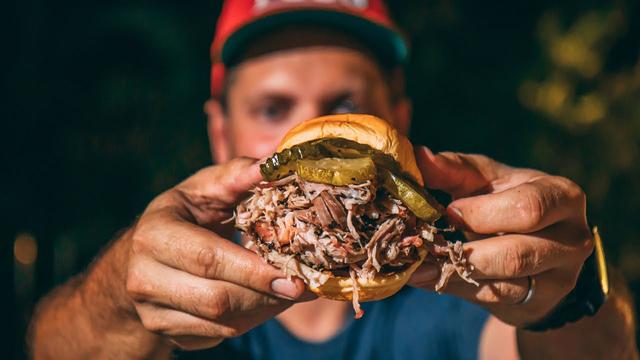
Pulled pork sandwiches are a classic and delicious way to enjoy smoked pork butt. Start by getting some nice brioche-style buns to hold the pulled pork. You can either buy them from the store or make your own. Then, make a tangy and flavorful homemade BBQ sauce to add some zip to the sandwich. Texas-style BBQ sauce works great for this. Finally, top your sandwich with some sliced jalapenos for an extra kick of heat.
Pairing pulled pork with mac and cheese is always a winning combination. Take your mac and cheese to the next level by smoking it alongside your pork butt. This will infuse the dish with a smoky flavor that perfectly complements the rich and creamy cheese sauce. You can find many recipes online for smoked mac and cheese, but be sure to save some room on your plate for this cheesy side dish.
If you have any leftover pulled pork after making sandwiches or sides, don’t let it go to waste! There are countless ways to use leftover pulled pork in other recipes. You can make tacos, nachos, quesadillas, or even pizza with the leftover meat. Another option is to vacuum seal the pulled pork and save it for later use. It freezes well and can be easily reheated for future meals.
What’s A Good Side Dish For Pulled Pork?
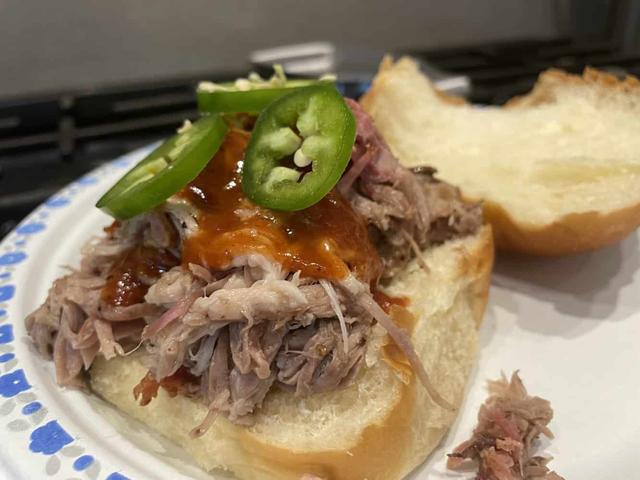
Pulled pork is a classic barbecue dish that pairs well with a variety of side dishes. One popular option is mac and cheese, which adds a creamy and comforting element to the meal. Another delicious choice is coleslaw, which provides a fresh and crunchy contrast to the rich pulled pork. Baked beans are also a traditional side dish that complements the smoky flavors of the meat.
If you’re looking for something lighter, a simple green salad or grilled vegetables can be a refreshing addition to your plate. Cornbread is another popular choice, offering a sweet and savory combination that goes perfectly with the tender pulled pork.
Ultimately, the best side dish for pulled pork will depend on your personal preferences and taste. Feel free to experiment and find your own favorite combinations!
What to do with Pulled Pork leftovers
Pulled pork leftovers are a versatile ingredient that can be used in a variety of dishes. Here are some ideas for what to do with your leftover pulled pork:
– Pulled Pork Sandwiches: Use the leftover pulled pork to make delicious sandwiches. Simply heat up the meat, add some BBQ sauce, and serve on buns.
– Pulled Pork Tacos: Create flavorful tacos by filling tortillas with pulled pork, shredded cheese, and your favorite toppings like salsa, avocado, and cilantro.
– Pulled Pork Pizza: Top your favorite pizza dough with pulled pork, BBQ sauce, cheese, and any other toppings you desire. Bake until the cheese is melted and bubbly.
– Pulled Pork Nachos: Layer tortilla chips with pulled pork, cheese, jalapenos, and other nacho toppings. Bake until the cheese is melted and serve with salsa and sour cream.
– Pulled Pork Quesadillas: Fill flour tortillas with pulled pork and shredded cheese. Cook in a skillet until the cheese is melted and the tortillas are crispy.
– Pulled Pork Fried Rice: Add pulled pork to fried rice along with vegetables like carrots, peas, and onions for a tasty twist on this classic dish.
These are just a few ideas to get you started. Get creative in the kitchen and experiment with different recipes using your leftover pulled pork!
Wrapping It Up
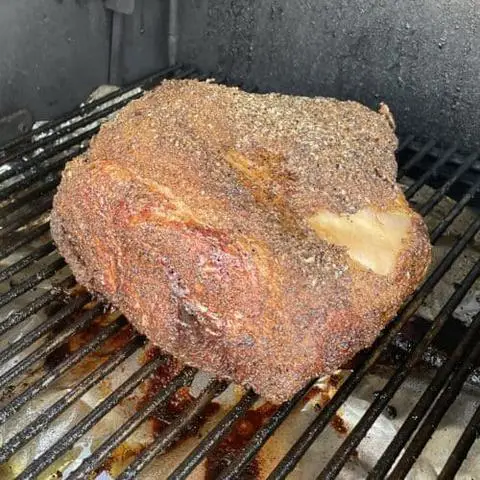
After smoking your pork butt for about 8 hours at a temperature of 265-280F, it’s time to wrap it up. By this point, the fat cap should have split, indicating that the meat is ready to be wrapped in foil. If the fat cap hasn’t split after 8 hours, you may need to increase the temperature and wrap it in foil to speed up the cooking process.
Wrapping the pork butt in foil helps to trap moisture and render more of the fat inside the meat. You can also choose to wrap it in butcher paper if you prefer a crisper bark on the outside. Regardless of your choice, wrapping the pork butt will help tenderize the meat and enhance its juiciness.
Aaron Franklin Inspired Smoked Pork Butt
If you’re looking to step up your pulled pork game, then this Aaron Franklin inspired smoked pork butt recipe is for you. Smoking a pork butt is one of the easiest cuts of meat to smoke, thanks to its forgiving nature and abundance of fat. The key to success is ensuring the meat is thoroughly cooked and allowing enough time for the fat to render down properly.
Aaron Franklin, an internationally known BBQ master based in Austin, Texas, has become a role model for many BBQ enthusiasts. His simple approach to barbecue, focusing on natural flavors rather than complex rubs, resonates with many. In this recipe, I’ve taken inspiration from Aaron’s method and made a few tweaks along the way.
Start by choosing a bone-in pork butt (also known as a Boston butt) over a pork shoulder. While they are essentially the same cut of meat, the pork butt tends to yield more tender and juicy pulled pork due to its higher fat content. Aaron smokes his pork butt at higher temperatures (around 265-280F), which I’ve started experimenting with as well.
To achieve that delicious smoke flavor, use oak wood or pecan wood if available. Plan for around 10 hours of total cooking time for your pork butt – 8 hours unwrapped and 2 hours wrapped in foil at a slightly higher temperature (280-300F). Use an instant-read probe thermometer to ensure the internal temperature reaches 203-205F for optimal tenderness.
Once cooked, let the pork butt rest in foil for at least one hour before shredding it by hand or using meat claws. Serve it on brioche-style buns with your favorite toppings or alongside some smoked mac and cheese for a mouthwatering meal. Don’t forget to experiment with different sandwich toppings to find your favorite combination.
Leftover pulled pork can be used in various recipes or vacuum-sealed for future use. Follow this recipe and enjoy the results – you won’t be disappointed!
Equipment
– Smoker (such as Yoder YS640s or Franklin Offset Smoker)
– Instant read probe thermometer
– Spray bottle for spritzing
– Foil or butcher paper for wrapping
– Meat claws for shredding
– Brioche-style buns for serving
– Optional: Thermapen One thermometer for checking doneness
1. Start by purchasing a bone-in pork butt, preferably around 10 pounds and thawed/chilled.
2. Lightly trim the pork butt, removing any large chunks of fat but leaving some fat intact.
3. Prepare the rub by combining kosher salt, coarse black pepper, and paprika in a seasoning shaker or bowl.
4. Preheat your smoker to 265°F – 280°F (or adjust according to your preference).
5. Generously apply the rub to all sides of the pork butt, ensuring an even coating.
6. Place the pork butt on the smoker, fat side up, and let it smoke for approximately 8 hours.
7. While smoking, periodically spritz the pork butt with a mixture of apple cider vinegar and water using a spray bottle.
8. Around the 8-hour mark or when the fat cap splits, wrap the pork butt in foil to speed up cooking and retain moisture.
9. Increase the temperature of your smoker to 280°F – 300°F and continue cooking for an additional 2 hours wrapped in foil.
10. After approximately 10 hours of total cooking time, check the internal temperature of the pork butt using an instant read probe thermometer. It should reach around 203°F – 205°F for optimal tenderness.
11. Once done, remove the pork butt from the smoker and let it rest in its foil wrap for about 1 hour before unwrapping.
12. Shred the pork butt using meat claws or your hands, discarding any excess fat or bone.
13. Serve the pulled pork on brioche-style buns, topped with your favorite BBQ sauce and optional toppings like jalapenos.
14. Enjoy your delicious smoked pork butt!
Note: Adjustments may be needed for smaller cuts of pork shoulder, such as wrapping at 170°F and smoking at a lower temperature.
Ingredients
– Bone-in pork butt, approximately 10 lbs.
– Kosher salt
– Coarse black pepper
– Paprika
1. Thaw and chill the pork butt if it was frozen. Lightly trim any large chunks of fat hanging from the pork butt.
2. In a small bowl, combine equal parts kosher salt, coarse black pepper, and paprika to create the rub.
3. Preheat your smoker to 265-280F (or adjust according to your preference). Place the pork butt on the smoker rack, fat side up.
4. Spritz the pork butt with a 50/50 mixture of apple cider vinegar and water every hour or so.
5. When the fat cap splits (usually around the 8-hour mark), wrap the pork butt tightly in foil or butcher paper.
6. Increase the temperature to 280-300F and continue cooking for an additional 2 hours, or until the internal temperature reaches 203-205F.
7. Remove the wrapped pork butt from the smoker and let it rest in the foil for at least one hour, but preferably 1.5 hours.
8. Unwrap the pork butt and use meat claws or your hands to shred it into pulled pork.
9. Serve on brioche-style buns with your favorite BBQ sauce and toppings, such as jalapenos.
Note: This recipe is based on Aaron Franklin’s method but may vary slightly from his exact technique.
Please note that this response has been generated by OpenAI’s GPT-3 model which may not be entirely accurate and should not be considered as professional cooking advice.
Instructions
1. Purchase a bone-in pork butt, preferably around 10lbs, thawed and chilled.
2. Lightly trim any large chunks of fat hanging from the pork butt, but don’t remove too much as pork butts are forgiving.
3. In a small bowl, combine kosher salt, coarse black pepper, and paprika to make your rub.
4. Preheat your smoker to 265-280F.
5. Sprinkle the rub generously all over the pork butt, ensuring it is evenly coated.
6. Place the pork butt on the smoker fat side up and smoke for approximately 8 hours.
7. After about 8 hours, check if the fat cap has split. If it has, wrap the pork butt in aluminum foil or butcher paper.
8. Increase the temperature of the smoker to 280-300F and continue smoking for an additional 2 hours wrapped in foil.
9. Check the internal temperature of the pork butt using an instant read probe thermometer. It should be around 203-205F when fully cooked.
10. Once done, remove the pork butt from the smoker and let it rest in the foil for about 1-1.5 hours.
11. Shred the pork with meat claws or by hand and serve on brioche-style buns with your favorite toppings or alongside smoked mac and cheese.
Note: Adjust cooking times and temperatures based on the size of your pork shoulder or personal preference.
Nutrition
The nutrition information for this smoked pork butt recipe will vary depending on the size of the pork butt used and any additional ingredients or toppings added. However, pork butt is a relatively high-fat cut of meat, so it is important to consume it in moderation as part of a balanced diet.
In conclusion, Aaron Franklin’s expertise in smoking pork butt is unparalleled. His meticulous technique and attention to detail result in incredibly tender and flavorful meat. Whether you’re a BBQ enthusiast or a culinary novice, trying Aaron Franklin’s pork butt will undoubtedly be a mouthwatering experience.
Learn More About Grilling
If you want to learn more about grilling, check out these other helpful resources!

